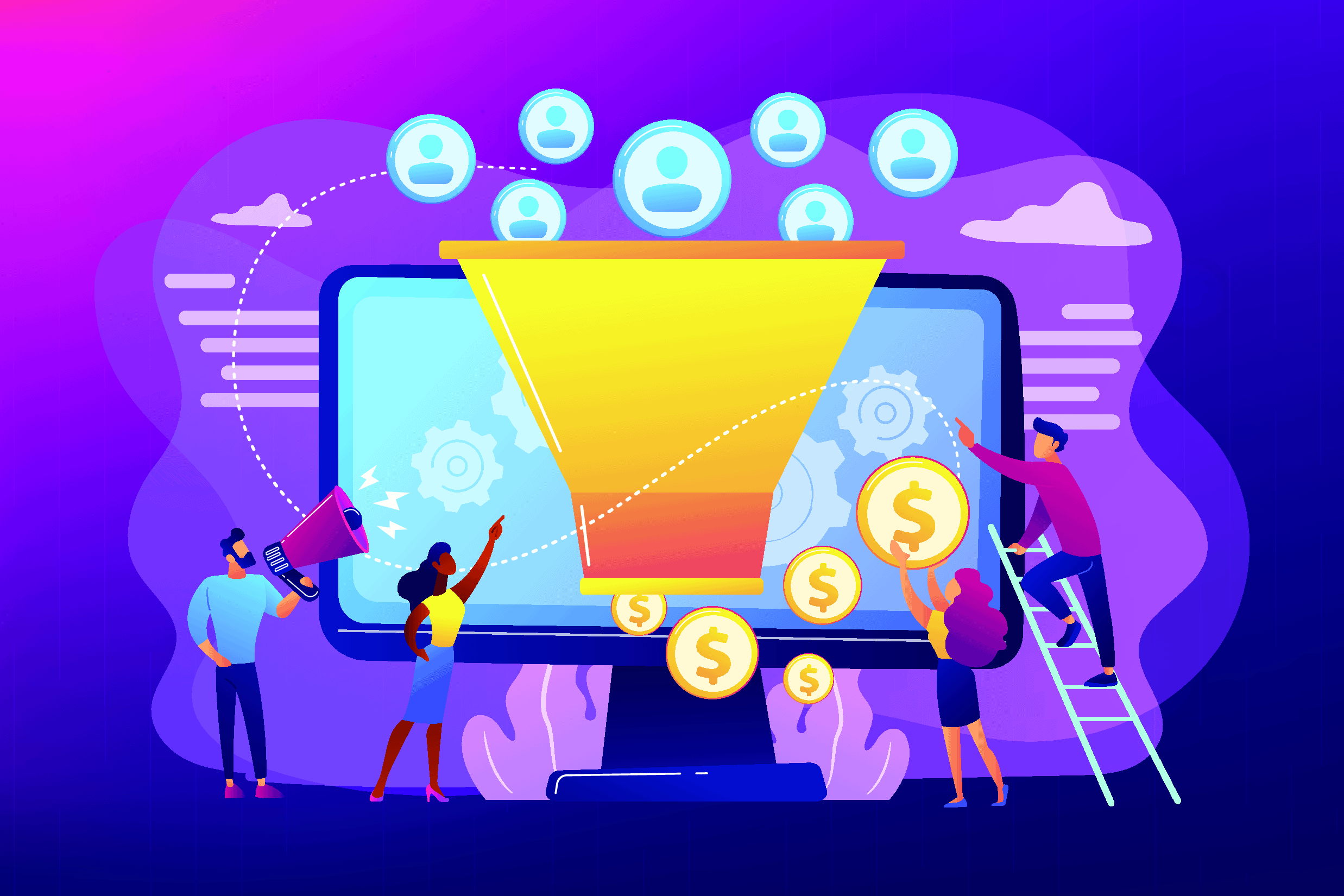Consumers now have access to more information than ever before because of the internet and other technological advancements. For this reason, marketing plays an ever-growing role in generating leads and closing deals. Historically, there hasn't been a lot of communication between marketing and sales; traditionally, marketing has been the responsibility of lead generation while sales have been in charge of making money.
Improving the effectiveness of this procedure involves making it much more specific and effective in achieving content marketing goals like engaging with and winning over prospective customers. Despite its widespread popularity, the sales funnel has been questioned by many, who feel lifecycle marketing is more effective in nurturing prospects. After reading this article, you will have a clearer understanding of the similarities and differences between these two methods, allowing you to choose the best one for your business.
Welcome to the Sales Funnel
There are a lot of different names for the sales process, but they all refer to the same basic structure. It’s a resource that will help you educate customers, arouse their interest, and stay in touch with them while you work to close the deal. A company’s strategy for bringing in new paying customers is known as its sales funnel. The purpose of the various steps in the sales process is to increase the number of clients who make a purchase.
The Discovery Stages
This is the phase in which your consumers learn about your business and what you do. The first impression your brand makes on a consumer is crucial. Your online presence in the form of content, search engine optimization (SEO), social media promotion, and paid advertising — all play a role in the first stage of the marketing pyramid, where customers are just becoming aware of your brand.
Decision-Making and Research
Customers can find all the information they need about a company in the research phase of the sales funnel. Frequently asked questions (FAQs), specialized content, and developing information formats (live videos, applications, etc.) are provided. During this phase of lead nurturing, sales incentives, including limited-time offers, free trials, and consultations, are offered to potential customers.
Purchasing
Customers are converted from leads at the very end of the sales process. The next difficulty is ensuring that they will return. With the help of newsletters, digital feedback cards, and rewards programs, a business can reconnect with dormant prospects.
Lifecycle Marketing
Lifecycle marketing describes the customer’s experience from the first time they hear about the brand until they make a purchase. Like the levels of a sales funnel, each phase adds value to the business. The primary goal of this framework is to boost lead conversion by focusing the attention on the client rather than the sale. To do this, businesses employ promotional strategies based on the creation of high-quality content.
Awareness
The awareness stage of the marketing lifecycle is the initial stage of the sales process. The first step is to learn about a business or product. The next step is to decide whether to dig deeper. People who follow the customer journey protocols have high-quality content, lead magnets, and direct links to research to back up their assertions.
Decisions That Matter
This step of the sales process combines research with decision-making. It is inefficient for both the marketer and the lead to employ a third party to verify contact information. In contrast to applications and free trials, the objective is to communicate directly with clients. People favor live chat and video chat because they perceive them to be more personal. When a customer reaches this stage of the purchasing procedure, the sale is regarded to have been completed. They’ve decided to purchase your brand after hearing about it and becoming interested in it. The objective of lifetime marketing is to respond to consumer inquiries and collect feedback from them in various ways.
Loyalty
Marketing to customers who have progressed to the loyalty stage of the sales funnel is quite like marketing to customers who have progressed to the consideration stage. Ideally, you want the customer to return to your establishment. This approach considers the quality of the customer’s connection with the firm as a whole rather than the number of repeat transactions, as is the case with funnel techniques.
To sum it all up, there is no correct response to which works best. It depends on the marketer’s or business owner’s priorities. The conventional sales funnel is your best bet if you wish to acquire new customers and convert leads rapidly and effectively. If you want to retain customers over time and reap the rewards of their loyalty, the lifecycle marketing strategy is what you need.
Photo: Visual Generation/Shutterstock
You might also like:
5 Tips for Content Optimization for Every Social Media Platform
Support us!
All your donations will be used to pay the magazine’s journalists and to support the ongoing costs of maintaining the site.
Share this post
Interested in co-operating with us?
We are open to co-operation from writers and businesses alike. You can reach us on our email at [email protected]/[email protected] and we will get back to you as quick as we can.










